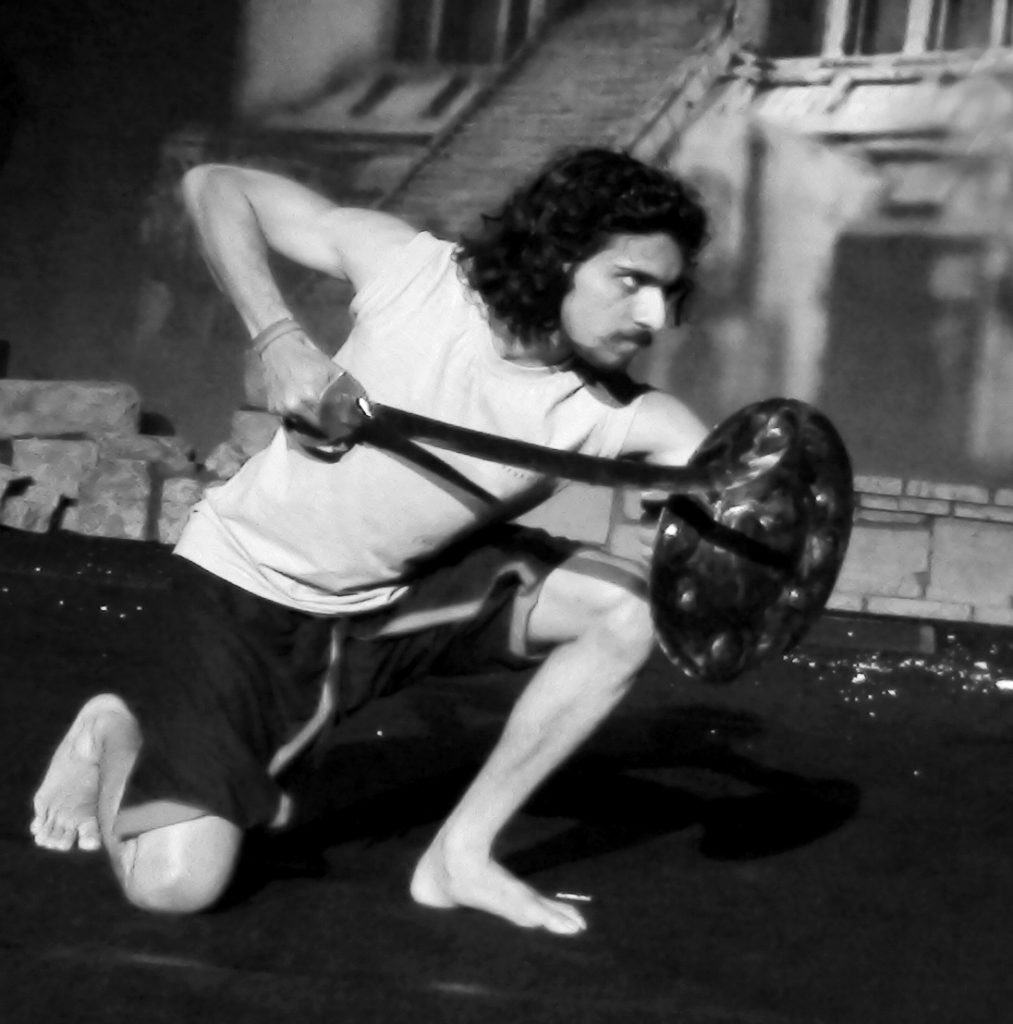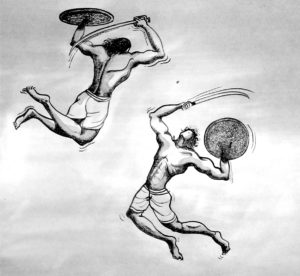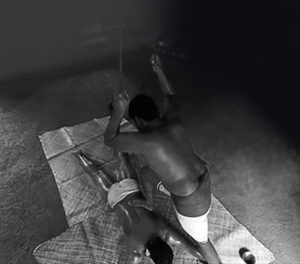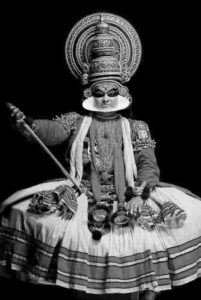 Kalaripayattu is considered one of the most ancient martial arts in the world. The fighting form indigenous to the Gods Own Country, is popularly known as the mother of martial arts. The term Kalaripayattu is derived from two words – “Kalari” meaning place of exercise or gymnasium and “payattu” meaning to fight or exercise.
Kalaripayattu is considered one of the most ancient martial arts in the world. The fighting form indigenous to the Gods Own Country, is popularly known as the mother of martial arts. The term Kalaripayattu is derived from two words – “Kalari” meaning place of exercise or gymnasium and “payattu” meaning to fight or exercise.
Traditionally, the Kalari centers are like a temple. The kalari is constructed four feet dug down the ground, the interiors of kalari is 42 feet in length and 21 feet width. Towards the south west corner, the poothara is placed and houses the guardian deity of Kalari. The seven-tier step resembling a pyramid symbolizes the seven qualities a kalari practitioner must possess.
Kalaripayattu, a personal combat training system includes exercises to develop sharp reflexes for unarmed combat and skillful fight using sticks, dagger, knife, spear, sword and shield, Urumi etc. Kalaripayattu is noted for its high-flying acrobatics, graceful movements and employs the deadly weapons at ease. The Movements of Kalari are based on the mannerisms and fighting techniques of animals.
Kalaripayattu History
The practice of Kalaripayattu is believed to be originated in the 3rd century BC. The saint Pasrshurama, the sixth incarnation of Vishnu is  said to be the founder of Kalaripayattu, who established 42 Kalaris and taught twenty-one masters of these Kalaris to protect the land of Kerala.
said to be the founder of Kalaripayattu, who established 42 Kalaris and taught twenty-one masters of these Kalaris to protect the land of Kerala.
The martial art was practiced by the warrior class of Kerala to protect the land. Kalaripayattu was flourished during the 100-year war period between the powerful dynasties of Cholas, Cheras & Pandyas around the 11th century. During the British rule in 19th century, they banned Kalaripayattu for the fear of revolution which resulted in sudden decline of Kalaripayattu across the state. In the late 20th century, the practice of kalari gradually gained popularity as part of promoting traditional art forms in South India.
Styles of Kalaripayattu
There are mainly two main styles of Kalarippayattu: –
Vadakkan or Nothern style – The Vadakkan Kalarippayattu is predominantly practiced in the Malabar region of Kerala. The Vadakkan style emphasizes more on graceful body movement and the weaponry.
Thekken or Southern Style- The Thekken Kalarippayattu or Adi Murai is practiced mainly in the Travancore region, this style involves more free armed techniques & powerful movements.
Stages of learning in Kalaripayattu
The training in combat is given at Kalari. The basic principle of Kalari training is that it starts with an oil massage which goes on till the body is agile and supple. The practice of Kalaripayattu is divided mainly into four stages;
- Maithari – Body Control Exercises
- Kolthari – Practise of wooden weapons
- Ankathari- Practice of metal weapons
- Verumkai – Bare hand fighting techniques
Treatment
 The practitioner who has mastered the martial training in all four stages will be guided on Kalari Chikitsa or treatment with traditional medicines. The system of healing is based on the knowledge of Marmas (Vital spots) and body’s energy channels. The medicinal applications were mainly developed by Kalari Gurus in order to heal the injuries occurred while fighting. This also helps to improve fighting capabilities of students. Traditionally, a student is admitted to kalari practise after Kalari Uzhichil or full body oil massage with hands & feet which is unique to Kalaripayattu. The process enhances the flexibility, improves mental sharpness and stimulate the flow of vital energy.
The practitioner who has mastered the martial training in all four stages will be guided on Kalari Chikitsa or treatment with traditional medicines. The system of healing is based on the knowledge of Marmas (Vital spots) and body’s energy channels. The medicinal applications were mainly developed by Kalari Gurus in order to heal the injuries occurred while fighting. This also helps to improve fighting capabilities of students. Traditionally, a student is admitted to kalari practise after Kalari Uzhichil or full body oil massage with hands & feet which is unique to Kalaripayattu. The process enhances the flexibility, improves mental sharpness and stimulate the flow of vital energy.
Influence of Kalaripayattu in other art forms
 Other traditional art forms like kathakali, Kolkali, classical dance forms etc have always been influenced by the movements of Kalaripayattu. The body control exercises of Kalari which demands good flexibility and grace enhances the performance in other art forms. Not only the kalari practise, the body massage or Uzhichil which is part of the kalari system is also sought after by the artists to improve their physical agility in performance.
Other traditional art forms like kathakali, Kolkali, classical dance forms etc have always been influenced by the movements of Kalaripayattu. The body control exercises of Kalari which demands good flexibility and grace enhances the performance in other art forms. Not only the kalari practise, the body massage or Uzhichil which is part of the kalari system is also sought after by the artists to improve their physical agility in performance.
Benefits of Kalaripayattu
The practice of Kalari provides significant benefits to the practitioner. The traditions of combat are practiced for various reasons such as self-defense , mental & spiritual development, perfomances and for the preservation of a nation’s intangible cultural heritage.
- Improves the body strength & flexibility which helps to fight and protect yourself
- Improves the speed & reflex to the core
- Increases the concentration level
- One’s patience is improved
- Helps in surviving assault
- Enhances the immunity and keeps you away from diseases
- Activates the physical & spiritual powers to the maximum